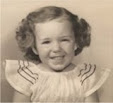
Right: Angel and friend, the Royal Borough of Kensington and Chelsea
Today was the annual Open Day at Brompton Cemetery, a Victorian necropolis with more than 200,000 residents, all of whom were unobtrusively present for the games, handicrafts, organ music, face-painting, and bouncy castle, as well as tours related to various interests. “This is tree number 26 – lovely cones…” I overheard on my way past the sparsely-attended Cemetery Trees tour. I am not making this up.
I invested £2 in the once-a-year opening of the Brompton Catacombs (or catacoombs, as one says locally). I had walked over from the neighboring borough of Hammersmith and Fulham under glowering skies – the perfect light for photographing graves – so I barely squeaked in to the tour.
Apparently there was a certain amount of status involved with where Victorian ladies and gentlemen were interred, and when the Brompton Cemetery opened for business in 1841 they offered, in addition to earth burial, the option of spending eternity on a shelf. This had been popular on the continent, and the cemetery planners seemed to think it was going to take off like a house afire. Plans were made for enough catacomb space to store around 100,000 customers at luxury prices, but in the end less than 500 bodies ended up in Brompton’s upscale burial suites, and the remaining catacombs were never excavated.
Our guide led a dozen hardy 21st century folk down a stairway and into a narrow brickwork hallway lined with shelves holding coffins in various states of decomposition. Lest that word conjure images of rotting Victorians, you’ll probably want to be reassured that each body was first put into a plain wooden coffin, which was then placed in a 9-lbs-per-square-foot lead box, and hermetically sealed by a plumber. Sometimes a lighted candle was left inside to assure a vacuum after sealing, and disinterred catacomb corpses have been found to be perfectly desiccated and quite well-preserved even after more than a century.
The lead coffin was in turn covered by one of wood or metal which might be decorated with brass fittings or upholstered in leather or cloth and sometimes further embellished with fancy pins. These were not mere burial caskets meant to lie unseen, these were the post-mortem boudoirs of departed loved ones, meant to be visited regularly by entire families with rugs and picnic hampers. It is these outer coverings that are in some cases moldering away to dust and ruin, exposing the lead cases beneath, with the plumber's diamond-shaped markings attesting the coffin had been properly sealed.
But even with the brick walls whitewashed as they would have been in the 19th century, and with tiny skylights – now covered over – admitting a bit of natural light, the atmosphere in the Brompton catacombs cannot have been conducive to a pleasant visit. The hallway is too narrow, the floor too damp, the dead too close for comfort. Although unworried by cold or rain, a visiting family might not have felt at home there, cheek to jowl with not only their own dear departed, but everyone else’s as well. Visits, I’m thinking, would have been brief and to the point, unlike the long summer-afternoon picnics common at ground-level gravesites. The great Brompton Catacomb scheme went belly-up.
Brompton Cemetery covers about 16.5 hectares (41 acres), and if you’re wondering how you get more than 200,000 graves into that space, the answer is, use the Y axis. Graves purchased to hold families were dug up to 24 feet deep, then filled in and re-excavated as each family member’s turn came to move in. Gravestones were filled in progressively as the plot filled.
On my way out the skies over London stopped threatening and started delivering. I was sodden when I reached home, at least partly from stopping to get the picture above, of an angel whose job it is to hold a succession of pigeons heavenward for eternity.





2 comments:
I'm always amazed at the amount of History available within a graveyard, I imagine there'd be quite a bit at one that's a couple hundred years old.
I attended the Brompton Cemetery Open Day. I haven’t attended any other Open Day (at the cemeteries) other than Kensal Green and this was my first although I have visited Brompton twice before. It wasn’t as crowded as Kensal Green (and not as popular, Kensal Green’s Open Day is the most popular and the well-attended). I didn’t spot any Goths either. I took some photos and chanced upon the grave of Rawlinson (one of my cemetery poets which I photographed). The cemetery has Beatrix Potter connections (as I probably mention in my book) who used to live nearby and it is supposed that she visited it as a child and that some of the names on the tombstones (such as Nutkins which I found and took a photo of inspired the names of some of her characters). I spotted a Louisa Wallis buried next to a University of London professor! Also met Jeane with her husband (the psychic medium I met at the Kensal Green Open Day).
Post a Comment